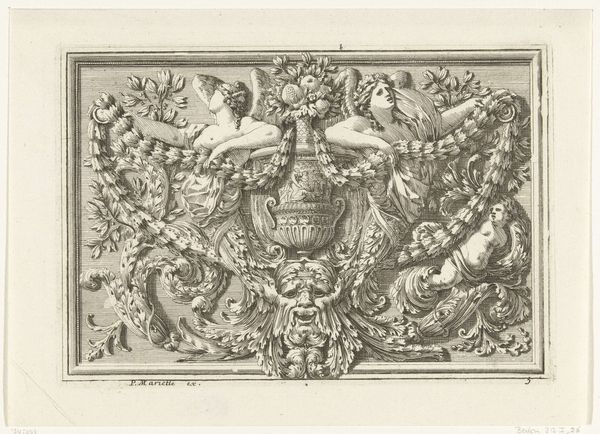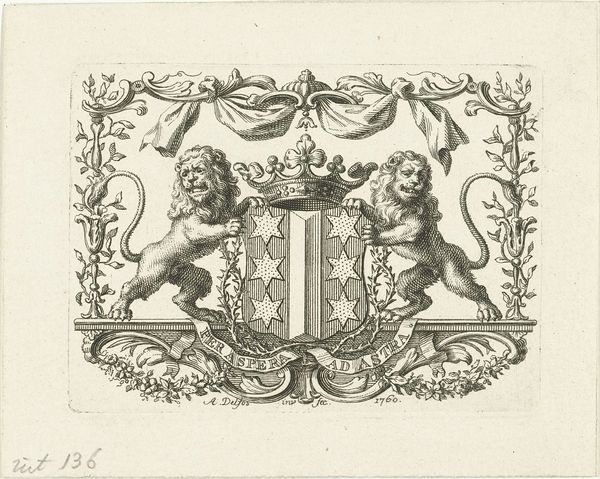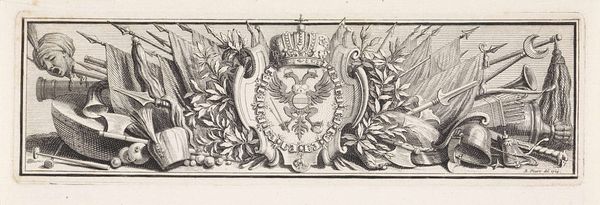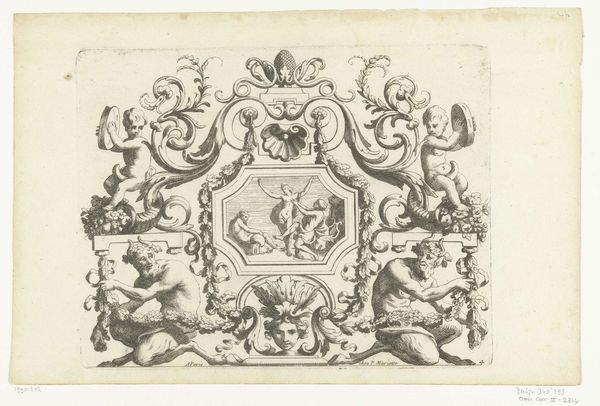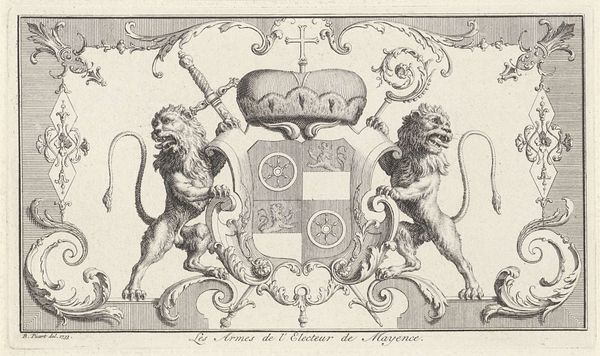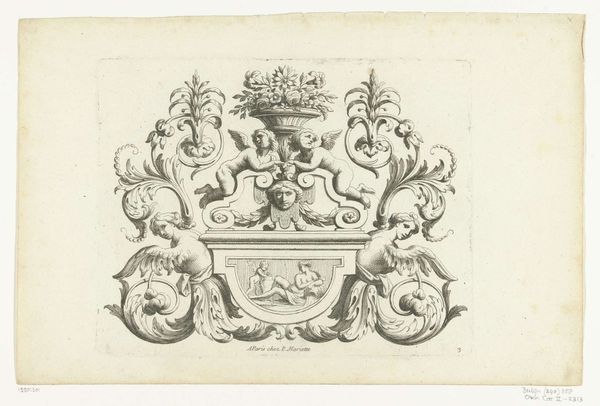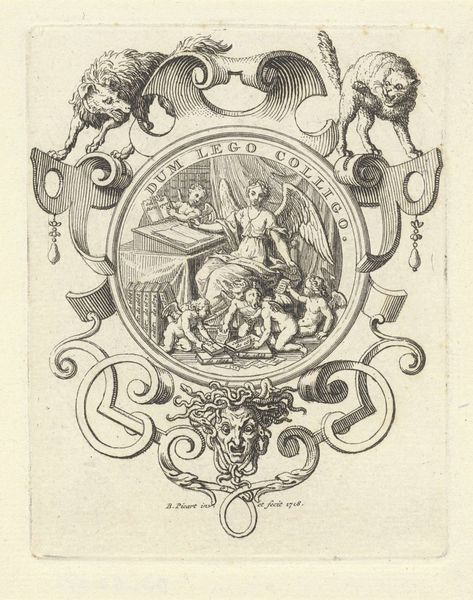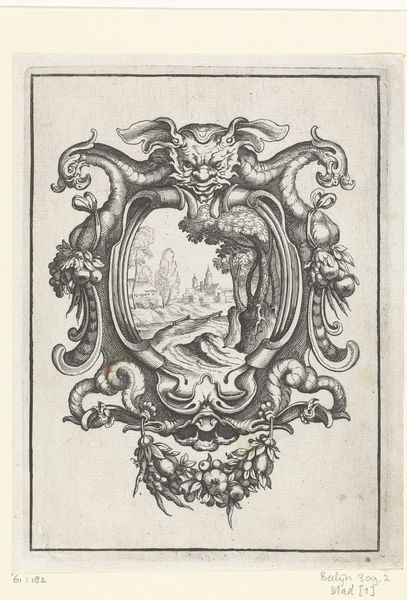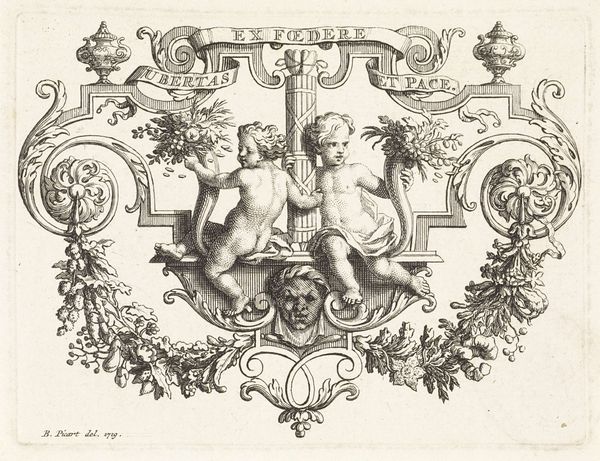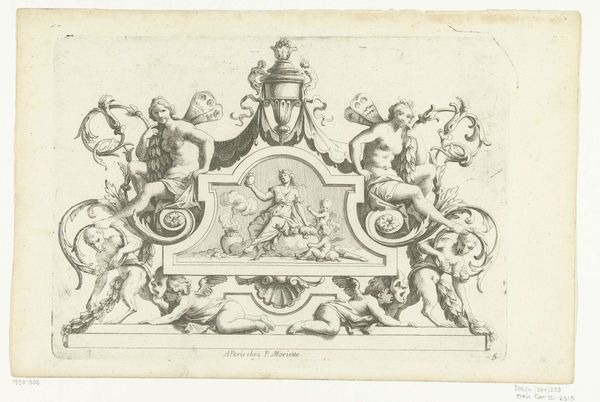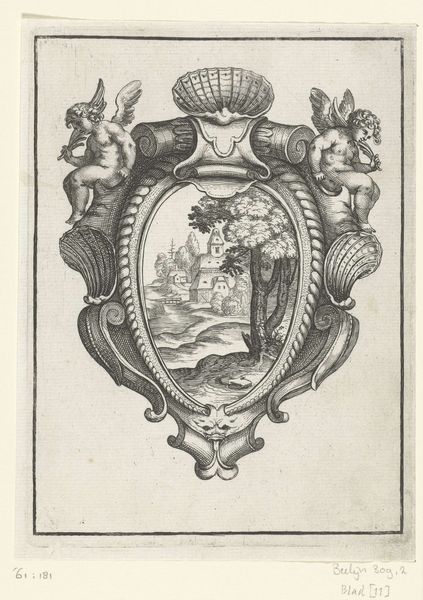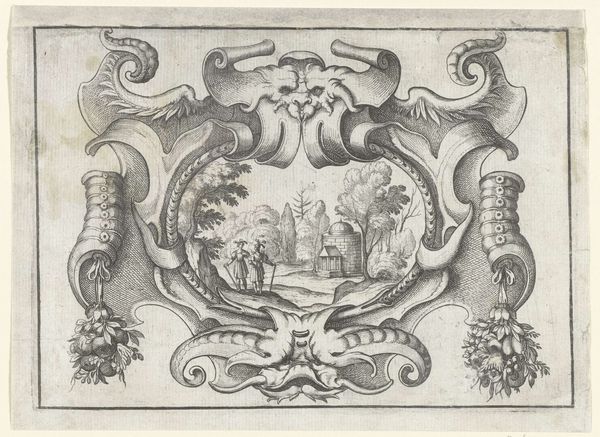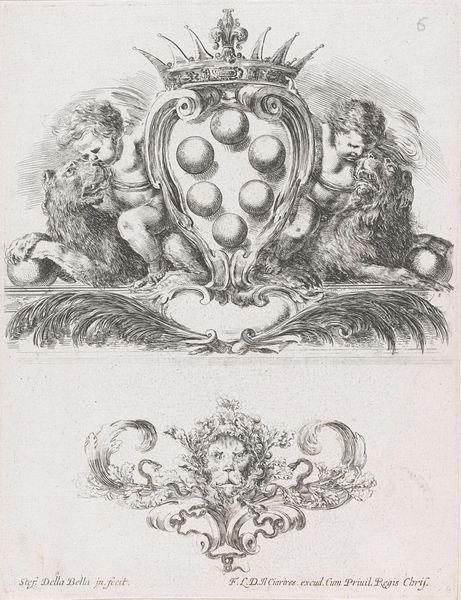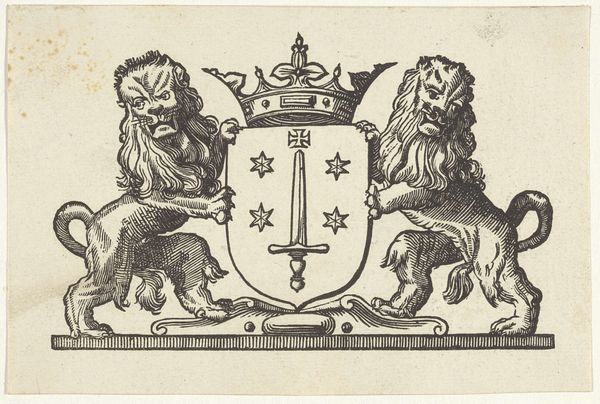
Dimensions: height 79 mm, width 112 mm
Copyright: Rijks Museum: Open Domain
Editor: Here we have Abraham Delfos's 1762 engraving, "Wapen van stad Leiden in cartouche, met twee leeuwen," a metal embossing print currently residing at the Rijksmuseum. I'm struck by the intense formality; what statement do you think this piece tries to make? Curator: Well, beyond the obvious heraldic function, this image is deeply embedded in the social and political landscape of the Dutch Republic. Ask yourself, what does it mean to depict civic power in this way, during this period? The Baroque style, with its emphasis on grandeur and detail, speaks to a desire to project authority and stability. The lions, of course, are age-old symbols of power and courage. But consider the context: Leiden was a prominent university town and a hub of intellectual and economic activity. Editor: So the visual language is a way to advertise that status? To me it looks a bit old-fashioned. Curator: Precisely. The very act of commissioning such a formal, traditional image speaks to a desire to maintain a particular kind of civic identity. Who benefits from this kind of imagery? Editor: I guess, the ruling classes, people in positions of authority who would want to connect Leiden to a powerful past. Almost like branding! Curator: Yes! You're spot on. And think about the placement of this print – who would see it, and where? Was it intended for public display, reinforcing a collective sense of civic pride, or for a more private, elite audience? These questions are crucial to understanding its function. Editor: That’s so interesting! So much more than just a coat of arms, it’s a statement about power. I’ll definitely see these kinds of images differently now. Curator: Exactly. By exploring those avenues of inquiry, we realize the visual can reinforce very strong political agendas.
Comments
No comments
Be the first to comment and join the conversation on the ultimate creative platform.
